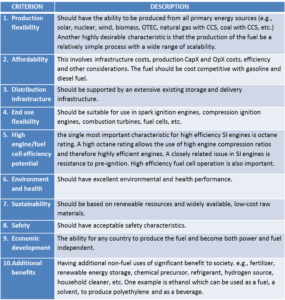NH3 Fuel Association President Presents at AIChE Annual Meeting
By Stephen H. Crolius on November 30, 2016
NH3 Fuel Association President Norm Olson presented his paper “NH3 – the Optimal Liquid Transportation Fuel” on November 9 at the annual meeting of the American Institute of Chemical Engineers (AIChE). The AIChE meeting, held over six days in San Francisco, provided a wide-ranging perspective on the sustainable energy landscape that ammonia energy must compete within.

The jumping off point for Olson’s paper was his statement that “Standardizing on one optimal liquid transportation fuel . . . could have huge economic, environmental and efficiency benefits”. He then went on to make the case that ammonia is the optimal liquid transportation fuel, based on evaluation against ten criteria.
The paper shows that ammonia performs well in each area and concludes, “NH3 (aka ‘The Other Hydrogen’) rises above other alternative fuel candidates based on the [selected] criteria”. The full paper can be viewed here.
Olson’s paper was presented at a conference-within-the-conference, the 2016 International Congress on Energy. His was one of approximately 900 papers that were delivered in the course of 150 discrete sessions dedicated to cutting-edge energy technologies.
Examination of the session materials reveals something significant: the world’s chemical engineers have moved on from today’s climate-threatening energy systems and are busy developing the sustainable energy technologies of tomorrow. Only a small minority of papers were devoted to status-quo concepts. The most prevalent session themes were biofuels, carbon capture, and electrochemical devices. Even the session thread billed as “Advances in Fossil Energy” was devoted to “design of environmentally sustainable, advanced fossil energy systems.” Representative papers in this series included Design and Advanced Optimization of a Natural Gas Combined Cycle Power Plant with CO2 Capture; Ideas Based Synthesis of Fossil Fueled Power Generation/Hydrogen Production Flowsheets with No Carbon Dioxide Emissions; and A Heuristic-Based Model for Gasification-Based Plants with Flexible Feedstock/Product in Carbon Constrained Scenarios.
This cascade of research on sustainable energy technologies creates an important context for ammonia energy proponents. It makes clear that the world is not waiting for the ideal energy carrier to be identified. Vast amounts of human effort and capital are being invested by parties confident that their technology of interest will be an important part of the ultimate solution.
On the other hand, it is notable that ammonia energy was included among the conference’s topics, and not just by virtue of Olson’s paper. Andrew Allman and Prodromos Daoutidis from University of Minnesota’s Department of Chemical Engineering and Materials Science presented two papers based on UMinn’s work on small-scale, renewables-based ammonia production. One of the papers, “Optimal Scheduling of a Renewable Ammonia Plant with Wind Generation Under Variable Electricity Pricing”, explicitly considers ammonia as an energy storage medium. There were also at least four papers on ammonia synthesis methods that promise to reduce the amount of energy consumed and carbon dioxide emitted per unit of ammonia produced.
Olson reported that his presentation was attended by roughly 30 conference participants. The time available allowed for just one question from the audience. The thrust of the question, Olson said, was that “The NH3 fuel story sounds so good, why is it not more widely supported?” In his answer, Olson cited possible concerns about ammonia’s safety profile, and also a simple lack of awareness that ammonia is indeed “the ideal liquid transportation fuel”.
According to its website, the AIChE is “the world’s leading organization for chemical engineering professionals, with more than 50,000 members from over 100 countries”. Click to read Olson’s paper, “NH3 – the Optimal Liquid Transportation Fuel.”